
Ah… Facebook advertisements!
Love them or loathe them, these ubiquitous native ads are a must have for brands considering social media marketing, especially since Facebook has reduced organic reach for Facebook pages to practically zero.
There is a lot of art and science in creating winning Facebook ads.
Here on Cooler Insights, I previously wrote about the basics of Facebook advertising, tackled the subject of image selection and copywriting, and highlighted Digital Marketer CEO Ryan Deiss’s tips on crafting influential ads, while guest writer Victoria Greene illustrated some important advertising strategies on Facebook.
Today, I am going to introduce you to a new concept called the Facebook Ad Builder. Taken from the Ultimate Guide to Facebook Advertising by Perry Marshall, Keith Krance, and Thomas Meloche, it is solid framework for us to follow.
Let us look at each of the building blocks, together with some examples which I’ve culled from my own Facebook feed as well as other sources.
#1 Curiosity
One of the strongest triggers for online action, curiosity-based hooks can help to grab your potential customer’s attention and nudge them to read your copy, watch a video or act on it.
Typically, curiosity can be nudged through…
- Asking a thought-provoking question
- Beginning with a successful quote from a customer
- Using a shocking statement
- Rocking conventional wisdom
Here’s an example of a curiosity-based building block from Ahrefs. If you are a digital marketer, I’m sure that copy and visuals like this would immediately trigger your inner thirst to know how long it takes.
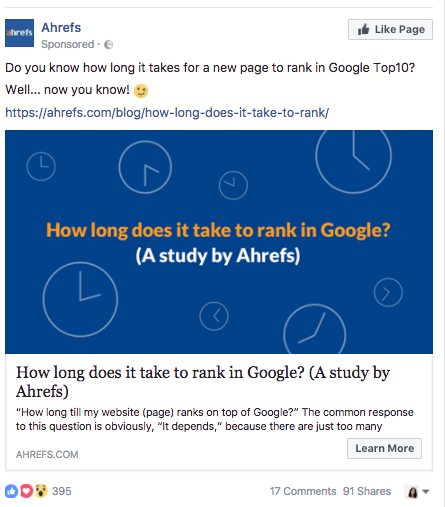
Courtesy of KlientBoost
#2 Address Challenge, Frustration, or Pain
Addressing the specific problem which your prospect faces is a good way to get your Facebook ad noticed. This can be done by asking questions that pique their interest:
- Frustration or Challenge: Ask a question that directly focuses on a specific problem. For example, “What’s your greatest challenge in embarking on social media marketing for your small retail business?” When doing so, try to be as specific as possible.
- Pain: “Do you find yourself tired and unable to get your engine started on Monday mornings?”
Here are two examples of such Facebook ads, from Hootsuite and LinkedIn.
The first from Hootsuite includes both pain and pleasure too, offering a glimpse of what you can achieve with their tool. Note how they’ve used social proof (“over 16 million professionals”) and a free trial to build trust and reduce risk.
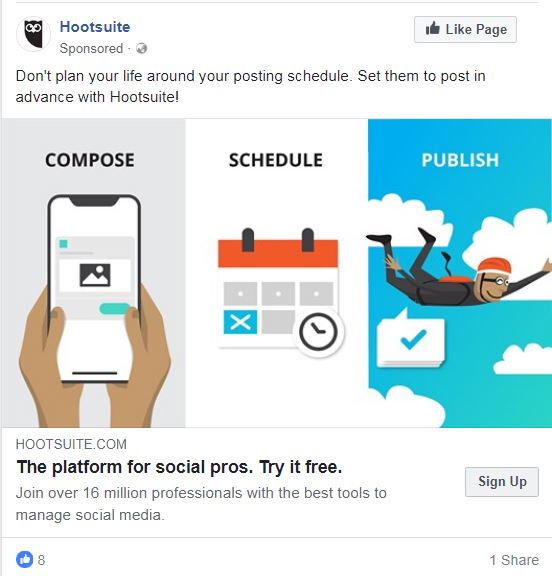
The second one from LinkedIn (surprise, they are here too!) specifically addresses the pain point faced by sales people in identifying the right person to talk to when introducing their products or services. Once again, social proof and risk reducers are present in the copy.
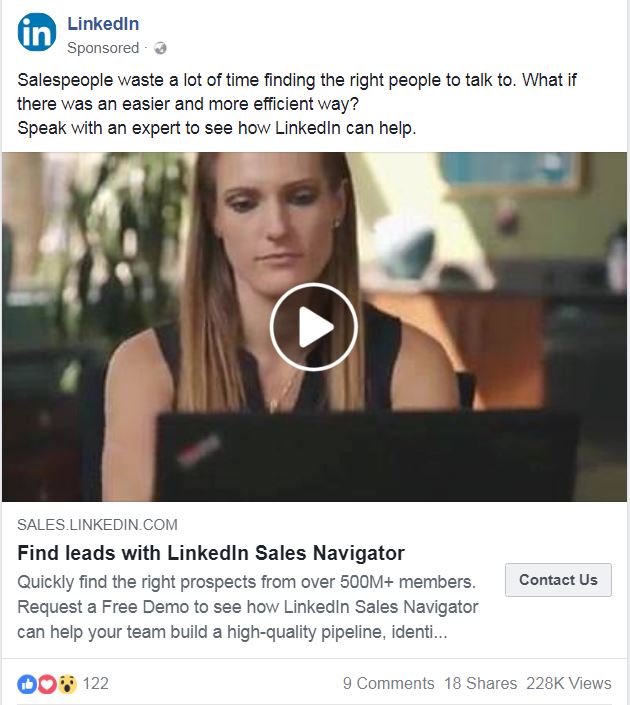
#3 Benefits and Desires
Beyond addressing the frustrations, you may also want to paint a scenario of success for your target audiences.
This can be done by using words that connect more deeply with your audience, like “so you can” or “because you want to” or “so that” at the end of any benefit in your copy. As spelling out your product or service benefits is probably second nature to most marketers, many companies have used this method to get their Facebook ads noticed.
Here’s an example of such an ad by Shopmatic. What I like about this ad is that it includes very specific facts about the product, ie “Open your own webstore in under 15 minutes.” This makes it more compelling for prospects.

#4 Credibility and Authority Statements
In a world full of online con artists, you need to use your marketplace credibility and authority to stand out from the rest. However, do be careful about coming across as being boastful.
Remember one of the cardinal rules of advertising “Show not tell?” Use that same approach in your Facebook ads by highlighting some your achievements but not overdoing the hyperbole.
Here’s a good example of an authority focused Facebook ad which builds on the credibility of the trainer and his affiliation to MIT.

#5 Provide “Aha Moment”
What is an “Aha” moment?
Well, according to the book authors, it can come in the form of the following…
- Information you can reveal or story you can tell which gives someone a sudden insight or realisation.
- Exposure of a common belief as a myth which is inaccurate and no longer applicable.
- A revelation of something which people didn’t know existed, didn’t know was available, or didn’t know was possible.
“Aha” moments can make your Facebook ad a lot more shareable as it makes your audiences sit and take notice.
Here’s an example of such an ad by Smartly. Notice how the “Aha” comes in the form of the following:
- “Wow, I can trade without paying commissions!”
- “Plus I can withdraw from this investment platform without any penalties!”
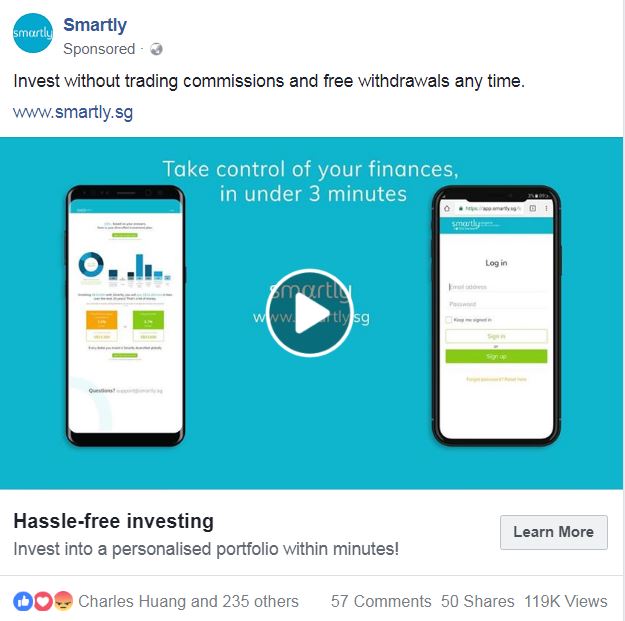
#6 Call To Action (CTA)
What do you want your reader or viewer to do after reading your ad? How can you have a naturally sounding CTA woven into your ad copy?
In all the examples above, you can see that the CTAs for the Facebook ads are very clearly articulated. Here’s one more example from Sanitarium, which clearly includes a CTA to Like the page.
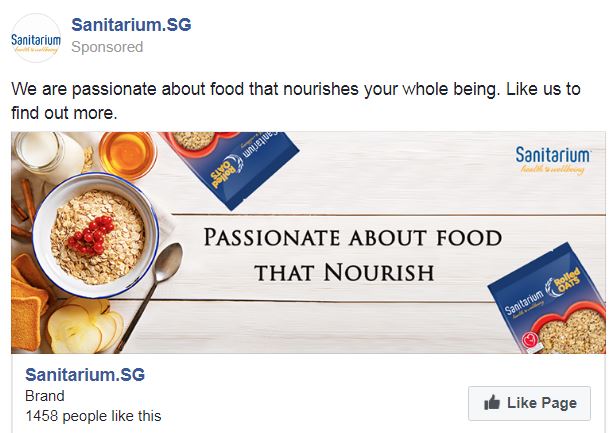
#7 Overcoming Objections
This is probably the hardest to do, given that most marketers hate to talk about the negative stuff in their ads.
However, the value of addressing objections in your ad is that it can help to make your offer more believable and authentic, and reduce the barriers to clicks, likes, comments and shares.
Here is an example from Dominate Media, taken from Digital Marketer. Contrary to popular belief, not all Facebook ads need to have short copy as shown by the long copy in this ad. See if you can identify which objections it seeks to address.
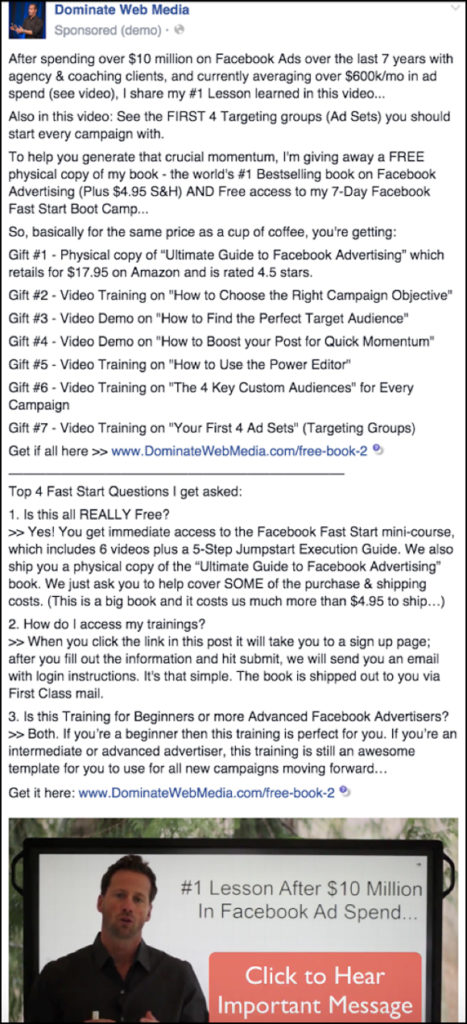
Conclusion
I hope that the 7 Facebook Ad Building Blocks have been useful for you. Personally, I found that it provides a useful way to frame my Facebook ads and to optimize them further.
Here are some more examples of great Facebook ads. See if you can identify which of the 7 blocks they’ve incorporated into their design and copy.
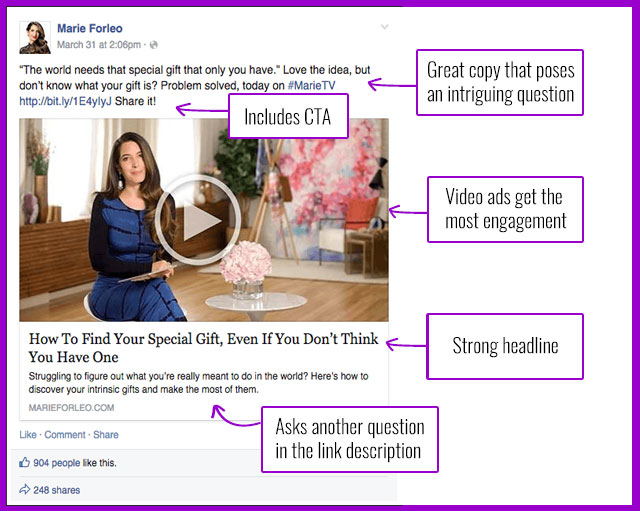
Courtesy of Connectio.io
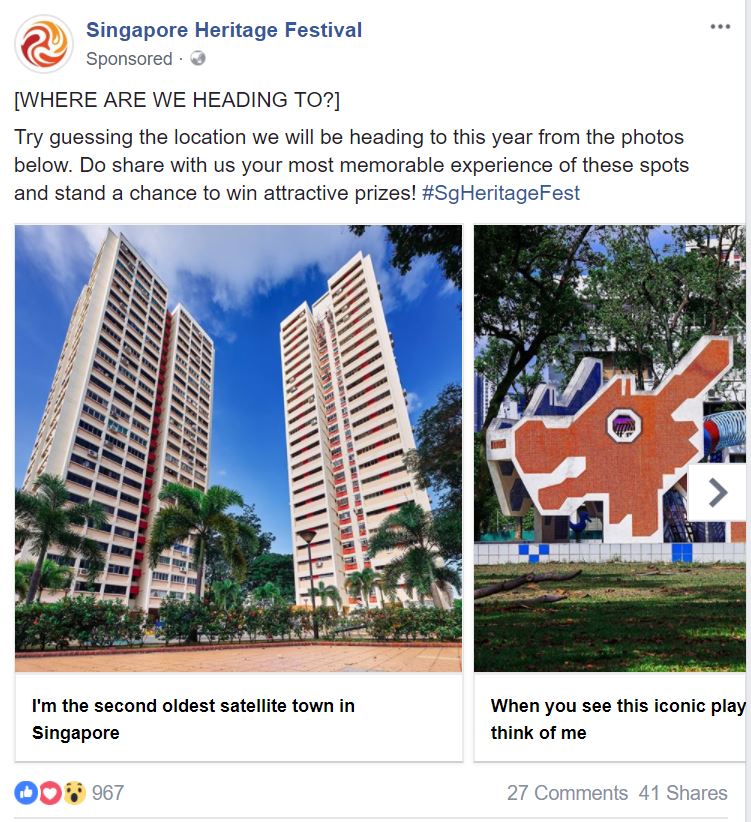
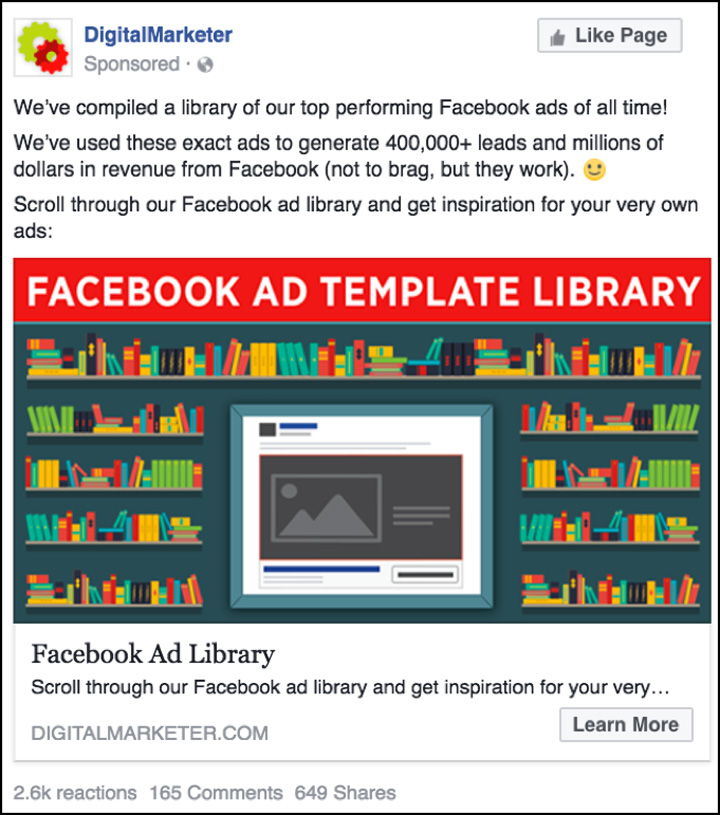
Courtesy of Digital Marketer
To learn more about Facebook advertising ninja tips and tricks, do grab a copy of the Ultimate Guide to Facebook Advertising. And no, this article isn’t sponsored in any way. 🙂
